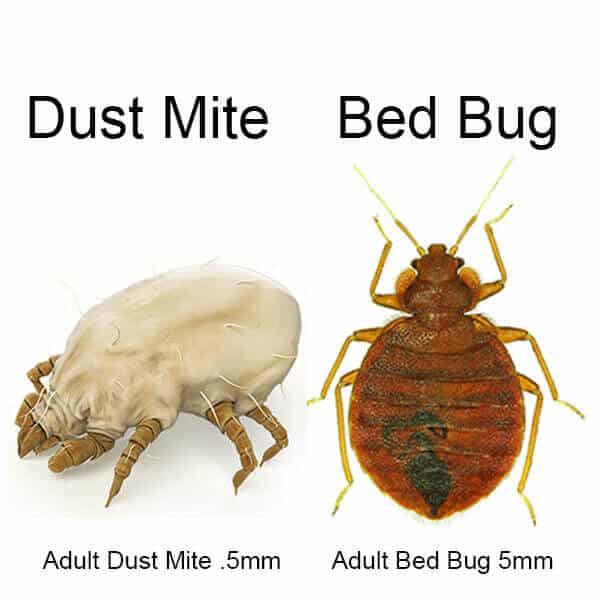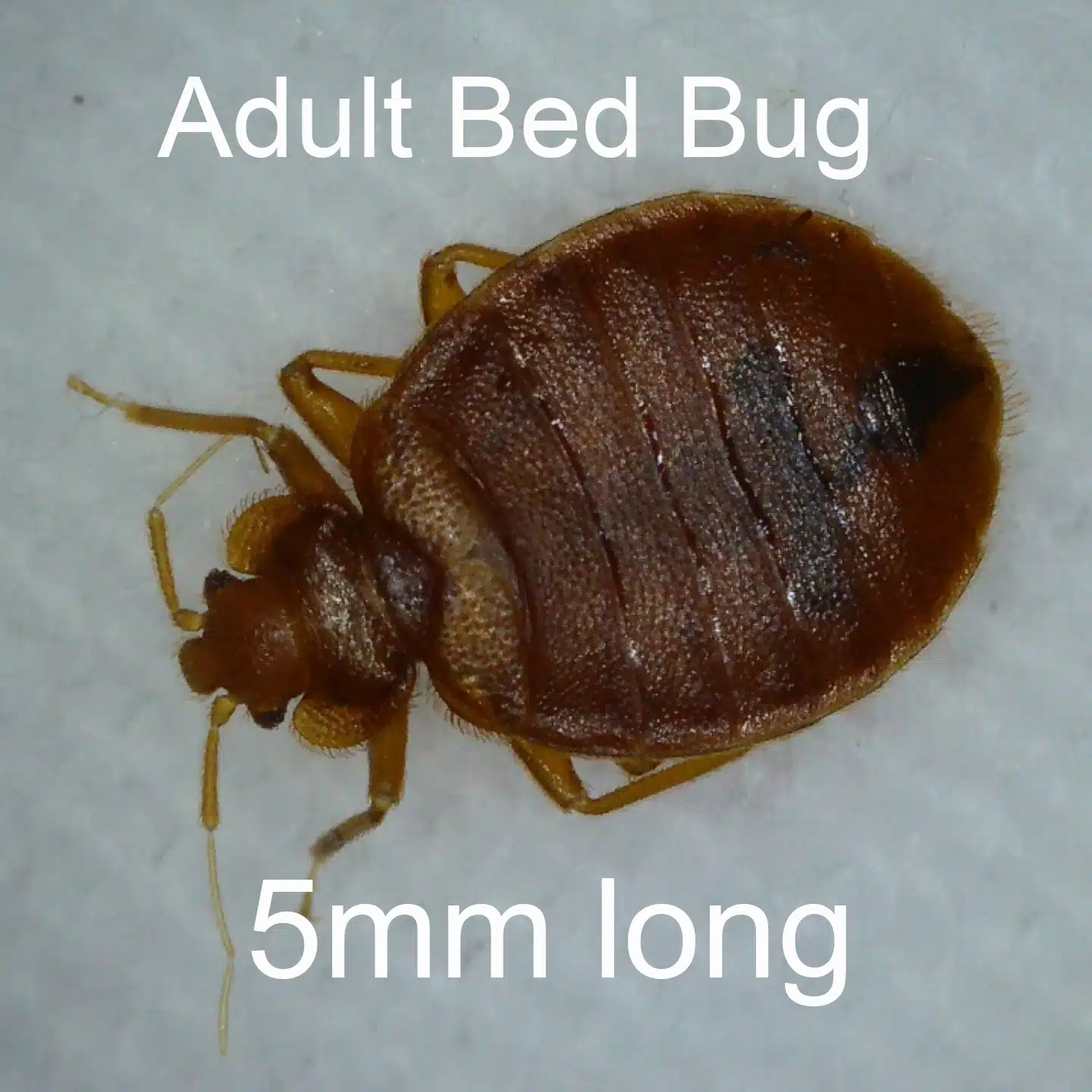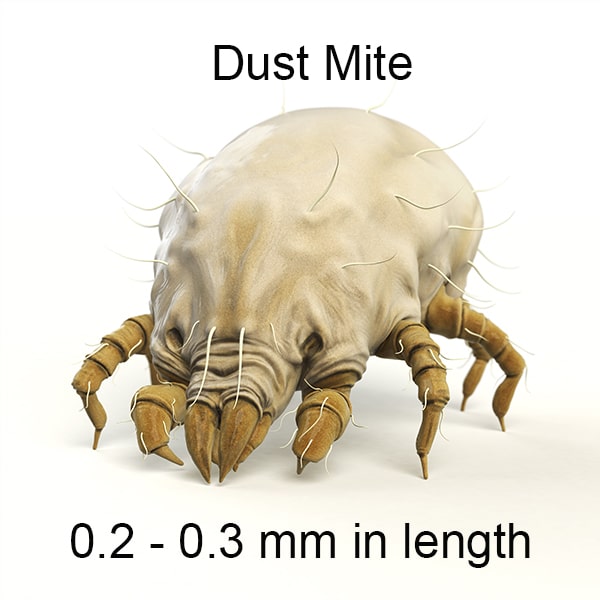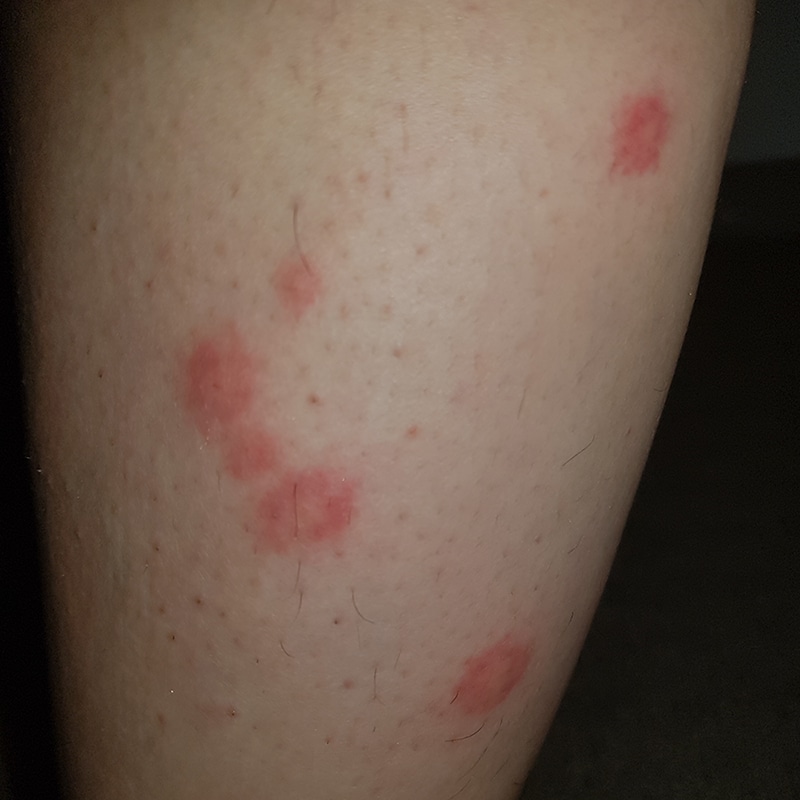
In the article
Knowing if you have bed bugs or dust mites is crucial in managing and preventing infestations. Often mistaken for each other, these pests require different approaches for effective control. Sadly, both of these critters can be found all over Australia, with dust mites being found closer to the coast and bed bugs being common across the entire country.
In this blog, we’ll explore what bed bugs and dust mites are, their distinct characteristics, and why it’s important to distinguish between them for effective management.
What Are Bed Bugs?
Bed bugs are small, oval, brownish insects that feed on the blood of animals or humans. Adult bed bugs have flat bodies about the size of an apple seed, with their bodies swelling with a reddish colour after feeding.
They’re known for their resilience, sometimes going months without meals, making bed bug infestations particularly difficult to eradicate. They are excellent at hiding, fitting seamlessly into tiny spaces, which is why bed bug detection in your home is not always straightforward. Bed bugs tend to reside in mattresses, bed frames, headboards, and other areas close to where people sleep – their feeding areas.

What are Dust Mites?
Dust mites are microscopic, spider-like creatures, invisible to the naked eye, that thrive in warm, humid environments. They feed on dead skin cells shed by humans and pets, commonly residing in bedding, upholstered furniture, and carpets.
Dust mite allergies are a widespread issue, often mistaken for seasonal allergies. This is due to their waste products and body fragments, which can easily become airborne and inhaled by people. In contrast to bed bugs, dust mite detection doesn’t rely on seeing the pest itself but rather on recognizing the allergic symptoms they provoke and the conditions in which they can operate.

Bed Bug Bites vs Dust Mite Bites
Bed bug bites are characterized by red raised bumps in a line or cluster. Some people don’t react to their bites, while bites can result in large, swollen welts in other people. Dust mites don’t bite.
When it comes to skin reactions, both dust mites and bed bugs can be troublesome, especially for those with sensitive skin or underlying conditions. Bed bugs are infamous for their biting behavior.
Dust mites, on the other hand, operate quite differently. They don’t bite at all. Instead, their presence is felt through their waste and decaying bodies, which can provoke allergic reactions in sensitive individuals. These reactions tend to worsen during the warmer months of spring and summer, presenting as rashes, itchy eyes, sneezing, coughing, and a scratchy throat.
If you experience any form of skin irritation, it’s essential to consult your doctor as soon as possible. While you might be reacting to dust mites, other insects could also be the cause of your discomfort. Your healthcare provider can help determine the exact source of your skin issues.
Understanding the distinctions between bed bugs and dust mites can help you take the right steps to protect yourself and find the appropriate treatment for your symptoms.

Bed Bug Bites
Bed Bugs or Dust Mites: The Key Differences
Determining whether you’re dealing with bed bugs or dust mite is crucial for effective pest management.
- Appearance and Habitat: Bedbugs are visible to the naked eye, generally around the size of an apple seed with a reddish-brown, oval-shaped body. They primarily hide within mattresses, bed frames, and other areas close to where people sleep. Conversely, dust mites cannot be seen without magnification. They thrive in warm, humid environments, also often found in bedding, upholstered furniture, and carpets.
- Feeding Habits: Bedbugs feed on human and animal blood, generally leaving behind itchy bites on the skin. Dust mites feed on dead skin cells shed by humans and animals, not leaving bites or sucking on blood whatsoever.
While bedbugs and dust mites share a common domain – our homes – their differences can’t be ignored. Understanding these differences is key in tailoring your approach to tackling each pest, whether through management or prevention.
Health Impacts: Bed Bug Bites vs. Dust Mite Allergies
When it comes to the health impacts of bed bugs and dust mites, it’s essential to understand the distinct effects each pest can have. While both cause discomfort, the discussion isn’t dust mite vs bed bug bits – the former don’t physically bite, rather triggering allergic reactions.
- Bed Bug Bites: Bed bugs feed on blood, usually at night, with bites resulting in a range of symptoms. The most common are small, red, itchy welts on the skin, appearing in lines or clusters on exposed areas of the body like the face, neck, arms, and hands. Bites can sometimes lead to more severe reactions, such as intense itching, swelling, or even allergic responses. The psychological impacts, including stress and sleep disturbances, should also not be underestimated.
- Dust Mite Allergies: Dust mites don’t bite, with the health issues they cause being due to the allergens found in their fecal matter and decaying bodies. Someone with a dust mite allergy may experience sneezing, runny or itchy nose, and itchy, red, or watery eyes. Individuals with asthma may have more severe reactions, including difficulty breathing, chest tightness, or wheezing. Unlike bites, symptoms are often persistent, reflecting ongoing exposure to the allergens.
- Managing Health Impacts: For bed bugs, management includes prompt identification and eradication of infestations. For dust mites, spaces require regular cleaning and environmental controls to reduce mite populations. Both require similarly proactive approaches to minimize their respective health risks.
Bed Bugs or Dust Mites can have significant health impacts in their own ways, which is why efficient identification is so essential.

Bed Bugs or Dust Mites
How to Identify a Bed Bug Infestation
Identifying infestations early is crucial for effective bed bug management and preventing the spread of these pests. They’re stealthy and can be challenging to spot, but several telltale signs can alert you to their presence.
- Visual Confirmation: The most obvious sign is the bugs themselves. Look for reddish-brown insects, especially around sleeping areas. Adults are comparable to apple seeds, while nymphs are smaller and lighter in color.
- Bite Marks: Bites are often the first indication of an infestation, appearing as red, itchy welts, often in lines or clusters on exposed skin.
- Blood Stains and Faecal Spots: Bedding and mattresses often show tiny blood spots or dark, rusty-coloured faecal matter. These are left behind on sheets, mattresses, and even walls after feedings.
- Eggshells and Shed Skins: The bugs shed their skins multiple times as they grow, leaving behind tiny, translucent eggshells or skins in and around your bed.
- Unpleasant Odor: A large infestation can produce a musty, sweet odour, caused by their scent glands.
Regular inspections and cleanings of your sleeping areas are crucial in detection. If you suspect an infestation, it’s important to act fast.
Detecting Dust Mite Presence in Your Home
Dust mites are invisible to the naked eye, making their detection challenging. However, there are ways to determine their presence in your home – primarily by recognizing their ideal conditions and the symptoms they cause.
- Allergy Symptoms: Persistent reactions such as sneezing, runny nose, and itchy eyes, especially after waking up, can be signs of dust mites – especially when more pronounced at home and improving when you are away.
- Humid Environment: Dust mites thrive in warm, humid environments. Homes with high humidity levels are often conducive to mite proliferation.
- Common Habitats: These critters are often found in bedding, upholstered furniture, and carpets.
- Use of Dust Mite Covers: While not strictly a detection method, using special covers on mattresses and pillows can help determine if symptoms improve, indicating their presence.
- Professional Testing: For a definitive answer, consider professional allergen testing of your home. This can confirm the presence of dust mites and their concentration.
Prevention involves maintaining a clean, dry environment, reducing humidity, and regular vacuuming with HEPA filters. Being vigilant greatly reduces the risk of dust mite allergies.
Professional Pest Control vs. DIY Solutions
When dealing with bed bugs and dust mites, homeowners have to choose between professional pest control services and DIY solutions, so it’s important to understand the implications of either.
Professional Pest Control: Professional services promise to tackle severe infestations using a range of high-tech tools and powerful chemicals. However, it’s worth noting that these treatments often render homes inhabitable for some time, with limited efficacy. Their poisons can simply spread populations, rather than dealing with them conclusively.
DIY Solutions: DIY solutions can be both cost-effective and efficient for either pest. These include regular vacuuming using HEPA filters, applying protective covers to mattresses and pillows, washing bedding in hot water, and maintaining a dry, low-humidity environment to deter mites. DIY methods for bed bugs might involve thorough cleaning, applying diatomaceous earth, or using physical barriers.
While professional services can be enticing, in reality, DIY methods are often more effective, cheaper, and safer.
Prevention Tips: Keeping Bed Bugs and Dust Mites at Bay
Preventing infestations is easier and more cost-effective than dealing with an active one, so we’ve put together some practical tips to minimize the risk of these pests:
Regular Cleaning: Vacuum your home regularly and wash bedding, curtains, and other fabrics in hot water to kill mites. For bed bugs, frequent vacuuming and decluttering can reduce hiding spots.
Control Humidity: Use dehumidifiers and air conditioners to maintain lower humidity levels, making your home less mite-friendly.
Protective Covers: Use special covers for mattresses, pillows, and box springs to create a barrier against mites or bed bugs.
Inspect Second-hand Items: Carefully inspect any second-hand furniture or clothing for signs of insects before bringing them into your home.
Travel Precautions: Inspect hotel rooms for bugs and keep luggage off the floor to prevent hitchhiking pests.
By incorporating these measures into your routine, you can significantly reduce the likelihood of an infestation.
Conclusion: Managing Bed Bugs or Dust Mites Effectively
Managing bed bugs or dust mites effectively is essential for a healthy, comfortable home. By implementing regular cleaning routines, controlling humidity, and staying vigilant, you can keep these unwelcome guests at bay. The best defence is a combination of knowledge, prevention, and timely action.
For more on bed bugs and DIY pest control, visit our blog today.
Frequently Asked Questions
- How do I know if I have dust mites or bed bugs?
Dust Mites: They are microscopic and typically cause allergic reactions like sneezing, runny nose, or itchy eyes. You won’t see them, but you might notice allergy symptoms. Bed Bugs: These are visible to the naked eye, about the size of an apple seed. Look for small, reddish-brown insects, dark spots on your mattress, or tiny blood stains on sheets. - How do you know if dust mites are biting you?
Dust Mites: They don’t bite. Instead, their droppings and body fragments can cause allergic reactions, leading to skin irritation or respiratory issues. - How do you know if you have been bitten by bedbugs?
Bed Bugs: Bed bug bites often appear as small, red, itchy welts, usually in a line or cluster. You might notice them upon waking, often on exposed skin like arms or legs.
Are You Looking for an Organic DIY Treatment?



lorraine says
I just want to say how pleases I was with your product . Easy to use and very effective.
After two (2) new beds with mattresses and also 2 VERY expensive exterminators I can finally sleep through the night and on WHITE sheets .So thank you for all of your help advice and product.
All I needed was a mattress cover and powder and now I am BUG FREE. Thank you Thank you
Nkr says
What powder did you use and was it for bedbugs or dustmites?
Bed Bug Barrier says
The powder is Bed Bug Killer powder for bed bugs.